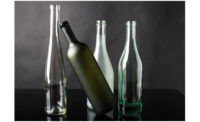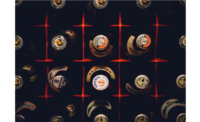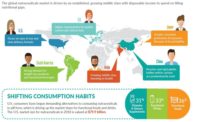Materials Technology: Materials/containers: Rigid containers
Rigid packaging market growth driven by its rising use in the pharmaceuticals, food and beverage industries.

Cuvee Coffee’s Black & Blue in Ball Corporation’s Nitro Cans, winner of BevNET’s Best of 2015 Award.

Brodrene Hartmann A/S brings their sustainable egg cartons to the U.S.

New clear plastic can from Sonoco offers innovative alternative to traditional metal can.



As one of the broadest categories of packaging dipping its toes into virtually every market, rigid containers are constantly tasked with creating more innovative and sustainable products time and time again, while at the same time, making consumers want to pick them up over their competition.
Rigid packaging has proven to be the ideal choice for transportation especially, keeping products safer, longer. Rigid plastic packaging, among others, has benefits such as high impact strength, high stiffness and high barrier properties. These, in turn, have expanded the market greatly for rigid packaging as of late.
Therefore, it’s no surprise that according to the Transparency Market Research (transparencymarketresearch.com) report, “Rigid Packaging Market – Global Industry Analysis, Size, Share, Growth and Forecast 2015 – 2021” the global rigid packaging market is expanding at a 4.50% CAGR starting from 2015 and into 2021 and is anticipated to grow from $549.7 billion, where it was in 2014, to $750.5 billion by 2021.
According to the report, the market is driven by the increase of rigid packaging in the pharmaceutical, food and beverage industries. When it comes to raw material type, the rigid packaging market is segmented into plastics, metal, glass, paperboard and others including timber, wood, paper pellets and pulp. With a share of 41.20% of the overall market, plastics were the leading raw material segment and are anticipated to register a 4.30% CAGR from 2015 to 2021. Rising at a 4.70% CAGR, paperboard is projected to be the fastest growing segment by the end of the forecast period.
Within the report, the market for rigid packaging is categorized into several markets, with food and beverages holding the largest share of the overall rigid packaging market and is estimated to register a 4.30% CAGR by 2021. Pharmaceuticals, on the other hand, will emerge as the most rapidly developing segment during the forecast period, exhibiting a 5.40% CAGR.
From paperboard to plastics and everything in between, here are just some of the latest rigid containers that have caught the eyes of Packaging Strategies as of late.
A new metal technology breakthrough from Ball Corporation (ball.com) enables the use of recycled aluminum in the manufacture of extruded aluminum packaging for aerosols. The resulting new metal alloy has increased strength and allows lightweighting of the container without affecting package integrity. This technology breakthrough allows Ball to lightweight extruded aluminum aerosol packaging by as much as 10%, with further lightweighting expected in the future.
At this time, almost all extruded aluminum aerosol packaging is made from virgin aluminum “slugs,” according to Ball press materials. These metal disks are impact extruded to produce packaging for aerosol products. As one of the world’s largest producers of aluminum slugs and of recyclable aluminum beverage cans, Ball will use aluminum recycled from its global beverage can operations to produce the company’s new slugs.
Also noteworthy from Ball Corporation is Cuvée Coffee’s Black & Blue in nitro cans, which won BevNET’s Best of 2015 Award for “Best Packaging Innovation of the Year.”
According to press materials, BevNET cited Cuvée as “the first cold brew brand to market a nitrogenated offering.” Cuvée’s Black & Blue is packaged in Ball’s innovative 375mL cans that include a nitrogen widget in the can that creates a soft, frothy head upon pouring.
Also new for rigid containers in the cans market is Sonoco’s (sonoco.com )new TruVue™ Can, a ground-breaking alternative to the familiar metal can, which has served as a primary packaging option for over 200 years.
The clear, retortable plastic could have the potential to revolutionize canned food aisles and even an entire food category that has not seen this kind of innovation in decades and has been challenged to meet the demands of Millennial shoppers.
The TruVue can, made with Sonoco’s patented FUSION Freshlock Technology™, is made of a highly engineered, multilayer plastic substrate, allowing consumers to see the product inside. The plastic can has an easy-open metal lid, metal bottom and most importantly, is the first clear plastic can to withstand the rigors of continuous retort systems without overpressure, performing in high-temperature and high-pressure environments.
New in sustainable rigid packaging, Brodrene Hartmann A/S (hartmann-packaging.com), a Denmark-based producer of sustainable molded-fiber egg cartons, expanded into the U.S. with a manufacturing facility planned for Rolla, MS to produce the company’s egg cartons. Hartmann’s molded-fiber cartons, made from renewable raw material paper, are carbon neutral, biodegradable and can be recycled.
These examples, among so many more popping up on the market each day, prove that rigid packaging is only on the rise with new innovations set to satisfy every consumer.
Looking for a reprint of this article?
From high-res PDFs to custom plaques, order your copy today!










